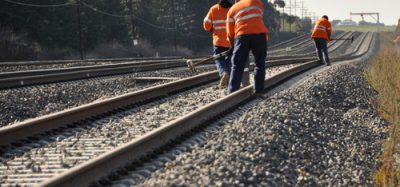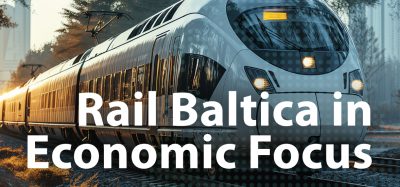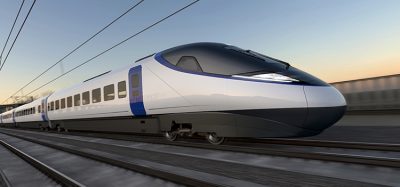ETCS Level 2: success for the Swiss Federal Railways
Posted: 6 June 2007 | | 1 comment
Since March 18 2007, the European Train Control System (ETCS) has been in full operation on Switzerland’s backbone of the railway network. The newly built Mattstetten – Rothrist line between Bern and Zurich is the core of the Rail 2000 concept. The new 42km section is used by 242 passenger trains and more than 30 freight trains a day travelling at speeds of up to 200km/h at operational headways of less than two minutes. The Swiss Federal Railway (SBB) is the first railway in the world to successfully introduce a highest density mixed traffic operation applying ETCS Level 2 and GSM-R voice.
Since March 18 2007, the European Train Control System (ETCS) has been in full operation on Switzerland’s backbone of the railway network. The newly built Mattstetten – Rothrist line between Bern and Zurich is the core of the Rail 2000 concept. The new 42km section is used by 242 passenger trains and more than 30 freight trains a day travelling at speeds of up to 200km/h at operational headways of less than two minutes. The Swiss Federal Railway (SBB) is the first railway in the world to successfully introduce a highest density mixed traffic operation applying ETCS Level 2 and GSM-R voice.
Since March 18 2007, the European Train Control System (ETCS) has been in full operation on Switzerland’s backbone of the railway network. The newly built Mattstetten – Rothrist line between Bern and Zurich is the core of the Rail 2000 concept. The new 42km section is used by 242 passenger trains and more than 30 freight trains a day travelling at speeds of up to 200km/h at operational headways of less than two minutes. The Swiss Federal Railway (SBB) is the first railway in the world to successfully introduce a highest density mixed traffic operation applying ETCS Level 2 and GSM-R voice.
Switzerland is an export oriented country. A high percentage of the Swiss industrial production is exported to the surrounding countries, mainly to Germany and Italy. Most of the heavy goods are transported by train. In addition, Switzerland is one of the geographical pivot points of Europe, as the shortest way from northern Germany to Italy passes through Switzerland. Therefore, a large proportion of the Trans European freight is transported over the Swiss railway infrastructure.
SBB is the infrastructure manager for 84% of the Swiss standard gauge rail network, measuring some 3,000km in length. Every year, more than 285 million passengers use the services of SBB and the trend to use public transport is increasing heavily.
SBB’s network is one of the most intensely utilised rail networks in the world. Additionally, the service is timetabled according to a multi-hub clock-face timetable, where the rolling stock and the infrastructure are being optimised together to maximise the number of transfer connections that can be offered to the passengers. This timetabling approach imposes a strict scheduling discipline in terms of the position and sequence of passenger train track slots, and, at the same time, requires a very high degree of punctuality in order to guarantee the connections.
Switzerland’s needs for a new train control system
The basic decision to adopt ETCS in Switzerland was already taken in 1998. This decision was based on the following considerations:
Increased capacity as a result of high speed and short headways
One of the challenges faced by SBB in the future is a significant increase in capacity. To achieve this aim, a number of projects are already being implemented (Mattstetten-Rothrist, Lötschberg). For the realisation of the new timetable concept on the new Mattstetten– Rothrist line, operational headways of less than two minutes at train speeds of 200km/h are necessary. This in turn, requires a highly reliable and high performance cab signalling system and adequate safety margins.
Replacement of existing train protection systems
For many decades, SBB’s network has been employing the SIGNUM warning/stop signal system for a total of presently 12,000 trackside signals. Following a series of accidents, SBB began in 1992 to upgrade network safety levels by installing the ZUB 121 train control system in specific areas. 2,500 signals deemed to be higher-risk were equipped with this speed-monitoring system in addition to SIGNUM. Nowadays, all of SBB’s mainline rolling stock is equipped with both the SIGNUM and the ZUB systems. However, both systems are approaching their end-of-life. The Federal Office for Transport, the body in charge of rail supervision in Switzerland, therefore stipulates that both systems be replaced by ETCS in the course of the normal upgrade cycle. At the same time, ETCS shall ensure interoperability with the rest of Europe and allow speeds of over 160km/h.
Interoperability
Simultaneously with the economic convergence of Europe, a common transportation policy was stipulated which aims to shift freight from road to rail. Performance and efficiency on the existing rail network have to be improved. European rail traffic needs to become faster, denser, more reliable and more cost-efficient – and stay safe all the same. Interoperability is the magic word and ETCS is the technical solution to meet some of these strategically important requirements. The Transport Ministers of Switzerland, Italy, Germany and The Netherlands recently signed a declaration of intent to implement ETCS on the Rotterdam-Genoa freight corridor by 2012. At present, ETCS is being implemented in 23 projects in Europe, representing a total of at least 3,000 track kilometres and approximately 800 vehicles.
Network access
It is one of Switzerland’s declared objectives to transfer traffic from road to rail. Owing to the various national trackside train protection systems in operation, railway undertakings that operate cross-border services are still forced to equip their vehicles with several expensive systems, resulting in a decisive competitive disadvantage of the rail compared to the road in cross-border pan-European passenger and freight services. As ETCS supersedes national train protection systems, network users will only need ETCS equipment for their vehicles, and the costs of network access will be reduced. The vehicle owners also hope that progressive standardisation will result in further price reductions of ETCS equipment.
Europe’s first commercial high density traffic service with ETCS Level 2
The new line Mattstetten – Rothrist (NBS) is one of the main lines in Switzerland and the core of the concept ‘Rail 2000’. With Rail 2000, Switzerland promised new alternatives to the increasing road traffic and to supply the Swiss population’s wants for higher mobility. The existing rail network that had remained virtually unchanged for over 100 years was to be revitalised.
After the Rail 2000 concept was approved at the ballots in 1987, the Swiss population repeatedly voted in favour of further government bills on transport policy, all of which aimed at an increased shift of traffic from road to rail. At costs of approximately CHF 30 billion, the railways were to be fundamentally modernised in the course of the ensuing 20 years. Apart from the construction of two new base tunnels at the Gotthard and Lötschberg respectively, the packet also includes the connection of Switzerland to the European high-speed network, noise remediation of the trunk line network, and the two phases of the Rail 2000 concept.
The aim of phase one was unmistakable and simple: ‘more railways’. The Swiss Railway had to provide faster, more frequent and more comfortable services. And ETCS was one of the keys to it: on the new line NBS, a combination of route straightening and ETCS Level 2 has cut journey times between the three main Swiss-German cities of Bern, Zurich and Basel to well under an hour.
After the public invitation to tender, the company Alstom was assigned to provide the ETCS Level 2 System for the new line. The project not only covered the development and integration for the trackside equipment, but also the retrofitting of about 470 vehicles with ETCS and the training of 2,750 loco drivers, maintenance staff and dispatchers. Because of the extremely tight timetable for the commissioning of the Rail 2000 project, SBB decided to also install simplified conventional line side signals as a measure to mitigate project delay risks.
On 12 December 2004, Rail 2000 and the new line Mattstetten – Rothrist were successfully put into operation. Not with ETCS Level 2, but with the trackside signals: ETCS did not yet reach the system stability and availability goals required to ensure operation with the new timetable concept.
A stepwise approach
Experiences from different projects had shown that at least 10,000 test and trial runs were required to demonstrate the availability for this type of signalling and train control system. In order to reach this big number of trial runs, SBB deployed a complex test concept for the commissioning of ETCS Level 2. Already before the system was put into commercial operation, its availability and stability could be tested during regular operation and many users could gain experience with the new technology. The test concept was based on the following different modes of trail runs:
- Shadow Running: During shadow running, the trains were controlled by the conventional Swiss train control systems ZUB/SIGNUM/ETM. The ETCS Level 2 System was active in the background, but did not have any operational relevance and did not intervene in the operation (brake application disabled). All ETCS functions were shown on the display (DMI) in the cab. During shadow running, ETCS Level 2 could be put to the test without any safety restrictions and without any impact on commercial services.
- Time table runs: The time table runs were introduced to prove the system stability at a load similar to the future operation with ETCS Level 2. With a separate timetable and eight locomotives, the operation close to reality was tested on the new line.
- Train runs in Level 0 on the rest of the network: In addition to the runs with ETCS Level 2 on the new line, runs on the rest of the network had been conducted. The aim of these runs was, to drive as many kilometres with ETCS in order to gain data for statistically significant analysis.
With this stepwise commissioning, SBB managed to introduce ETCS Level 2 to the core of the Swiss railway network with a minimum of risks. Thanks to the lateral signals, it was possible to switch easily from one signalling system to the other. On 2 July 2006, the commercial passenger intercity service with ETCS Level 2 was launched during late evenings. In the next eight months the operating hours with ETCS had been stepwise extended.
Positive balance for ETCS Level 2
Today, SBB draws a first positive balance. ETCS Level 2 meets almost the high requirements. After 23,000 runs, ETCS Level 2 did confirm its operational fitness and performance by the 1st quarter of 2007. Together with the industry, SBB succeeded to fully ensure a very dense high quality service of different vehicle types with ETCS Level 2. The stepwise approach for the introduction has proven its worth. By the end of 2007, speeds in the commercial traffic will be lifted from 160km/h to 200km/h.
Nevertheless, further important system improvements are ongoing and urgently required in order to meet the quality requirements of SBB and their demanding customers. The main areas include:
- Odometry: robustness (winter conditions at heavy snow fall and ice) and accuracy in degraded modes (impact on headway)
- GSM-R data communication (connection establishment and connection drop rate, quality of service)
- Trainborne software reliability (Driver Machine Interface, system failures at run)
- Interoperability and operational issues not yet covered in the European Technical Specification for Interoperability (TSI Annex A, SRS 2.3.0)
The above mentioned further improvements are not supplier specific. SBB faces the same challenges with all ERTMS suppliers providing ERTMS equipment in Switzerland.
In Switzerland, the key investments for a fast implementation of ETCS on the entire network are complete. More than 500 vehicles are already equipped with ETCS EuroCAB and EIRENE EuroRadio. The migration of ETCS happens with a ‘customer focus’: the infrastructure provides an attractive ‘ETCS-only’ access on the whole network until 2015.
About the author
Arnold Trümpi (Master of Electrical Engineering and MBA) is a dedicated ERTMS pro-gramme manager within the Infrastructure Division of Swiss Federal Railways (SFR). He joined SFR in 2001 after many years in the rolling stock industry and in consultant services. Within SFR he built up the new business unit ETCS dealing with the implementation of ERTMS throughout Switzerland. Arnold Trümpi is responsible for all ERTMS migration and application aspects within SFR. In his role as Head of the Business Unit ETCS, he reports directly to the Infrastructure Director.
Issue
Related topics
European Train Control System (ETCS), Global System for Mobile Communications – Railway (GSM-R), Infrastructure Developments, Interoperability & Liberalisation, Signalling, Control & Communications








I wonder what is ETCS commission mileage for this line ? and how the Debo impletement the assessment , for the TSI or NNTR part?